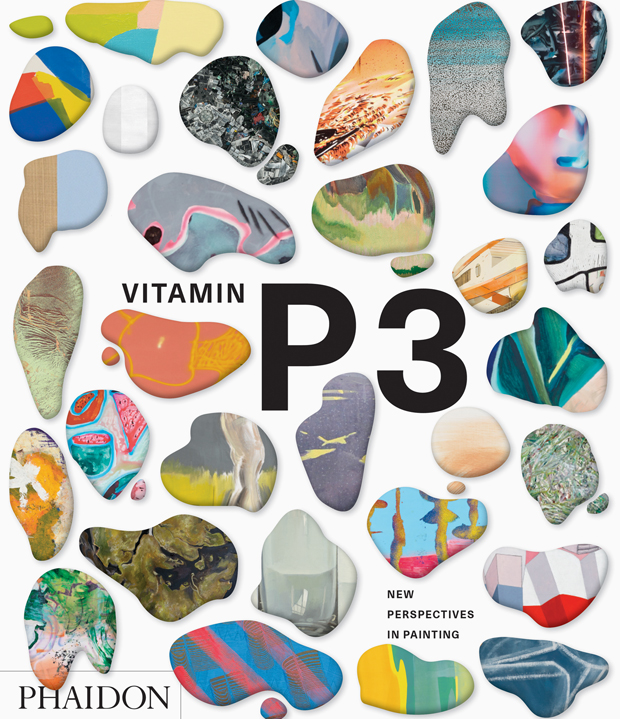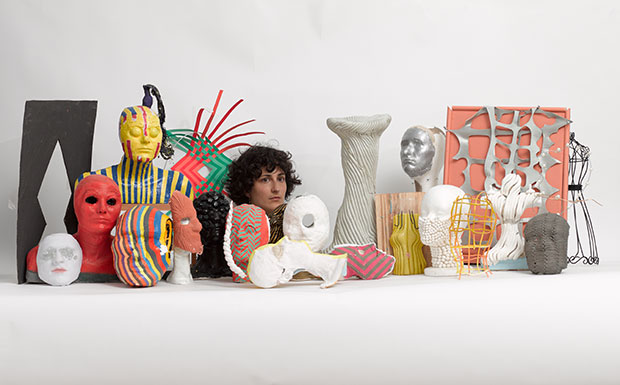
Sascha Braunig - Why I Paint
Exploring the creative processes of tomorrow's artists today - as featured in Vitamin P3
Canadian artist Sascha Braunig’s paintings thrive on a multiplicity of uncanny forms and forces: they play with light and shadow, flexibility and rigidity, fullness and emptiness, push and pull. These dynamics are made to negotiate with one another on the flat linen-covered board on which she paints. Braunig is a master of the trompe l’oeil, her visual effects ranging from the creation of depth and perspective to fantastical bodies, lighting and even movement, all rendered with carefully synchronized colour palettes.
Although Braunig’s aesthetic and lighting effects share a smoothness with digital imagery, she paints from ‘life’, making small clay models for her subjects and illuminating them in her studio with bright lamps and coloured gels ‘inspired by over-the-top movie lighting’. For Braunig, the ambiguity that surrounds the vitality of her subjects is an essential part of her work, as she explains: it is ‘important that there is a tension between their lifelessness and possible lifelikeness.’ Here, the Vitamin P3-featured painter tells us what interests, inspires and spurs her on.
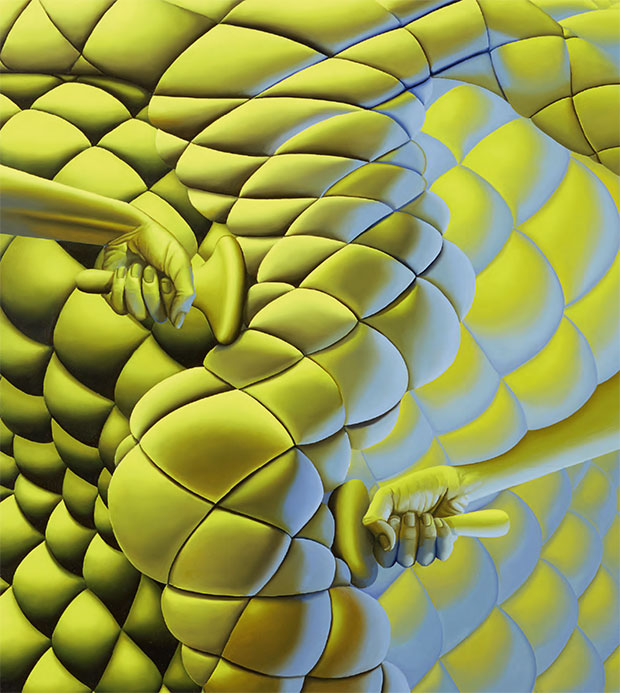
Who are you? I’m an artist from Canada, currently living and working in Portland, ME, and for the next year, Brooklyn, NY.
What’s on your mind right now? Most pertinent to this interview, I suppose, is the ever-present question of ‘how to proceed?’ I finished a show a couple of months ago, and now I’m generating new imagery about bodies ensnared or intermingling with their frame, the painting. I’ve decided that I want to summon figures that are strong, flexible and resistant right now. I’m usually listening to audiobooks while doing the ‘execution’ tasks of painting, and I’m currently in the thrall of Octavia Butler’s “Lilith’s Brood” trilogy. Her insistent themes include interspecies sex, infinitely regenerating flesh, flesh-as-architecture, and the complexity of alliances in any resistance movement. I’m into it, and thinking that these ideas are likely seeping into the images I’m making.
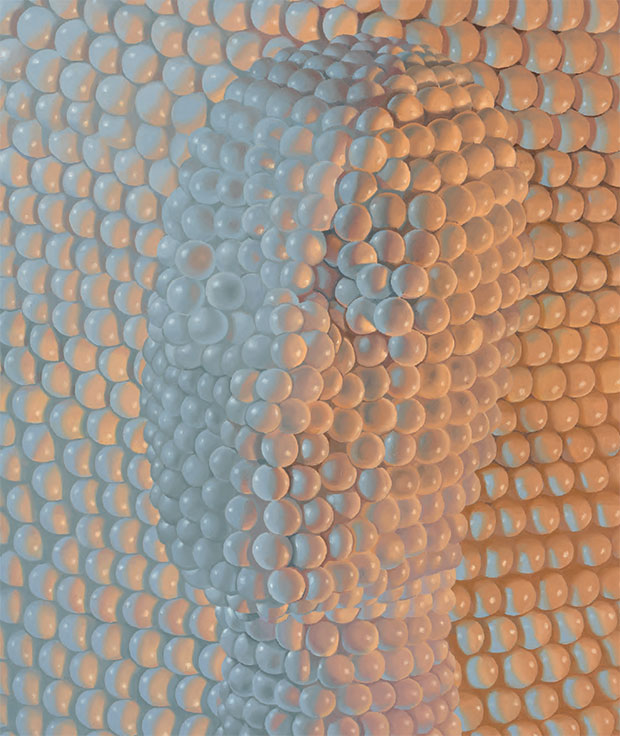
How do you get this stuff out? Well, at the moment, I draw in a sketchbook, then test out ideas and colours with water media or oil on paper sketches before starting a painting on panel. That part is more involved: I often paint from observation of small models, so sometimes I then set about creating a little tabletop stage set - a fantastical scene in three dimensions - as best I can. This model doesn’t look much like the painting - it’s a reference that I expound upon.
How does it fit together? What the work’s about and how it’s made don’t necessarily fit together. The observational practice has been important because it does change how the paintings look, making them more ‘graspable.’ It has also brought me around to making sculptures on a few occasions.
What brought you to this point? This question is tricky because it assumes that I'm at one point, like a sharpened pencil, whereas I feel more like I'm spread across multiple points like peanut butter.
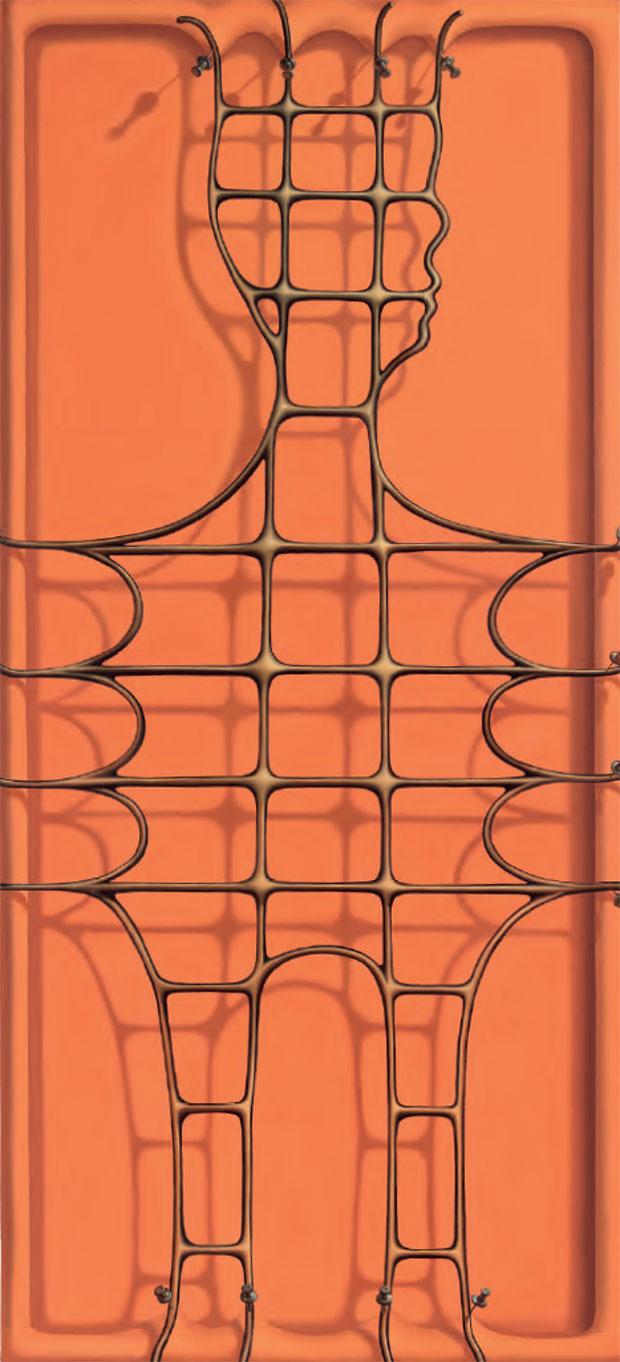
Can you control it? I probably have some control issues, which is likely why I’ve become sort of a precisionist painter. More and more, I’m learning to steer the execution part – ‘painting techniques’ - but of course you cannot really control when and how your ideas appear, and sometimes you must learn a new technique to execute a new idea. It would make for a boring life in the studio to achieve total control over your materials. As for ideas, you can set up ideal conditions for ideas to appear by reading, looking, and focusing, but to indulge in a cliché you cannot force them.
Have you ever destroyed one of your paintings? Yes, because sometimes they’re no good, and there’s a risk of contamination!
What’s next for you, and what’s next for painting? I’m moving to New York for the year because I’m lucky enough to have been selected for a studio at the Sharpe Walentas Foundation. I hope to keep working with bronze casting, which I’ve started to do already on a small scale. Painting is resilient and seems to be in no danger of fizzling out; I think artists across the spectrum will continue to use it for its tactility and its direct qualities.
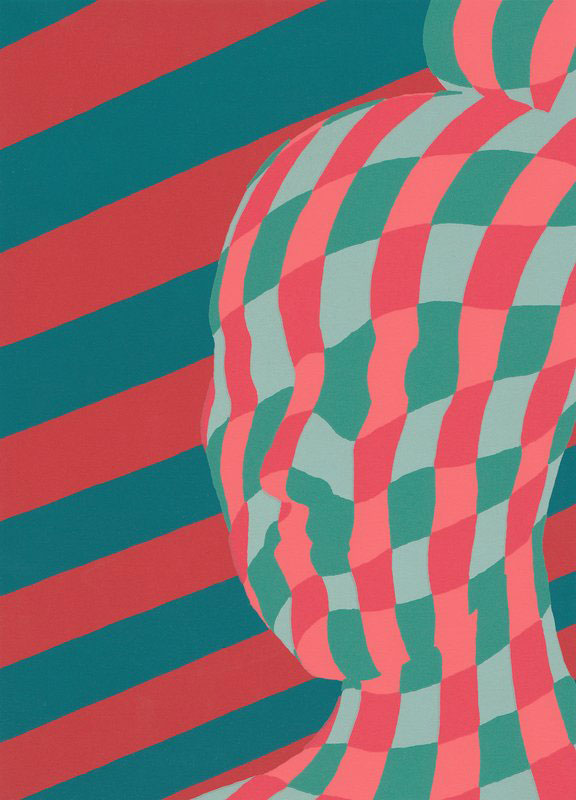
Vitamin P3 New Perspectives In Painting is the third in an ongoing series that began with Vitamin P in 2002 and Vitamin P2 in 2011. For each book, distinguished critics, curators, museum directors and other contemporary art experts are invited to nominate artists who have made significant and innovative contributions to painting. The series in general, and Vitamin P3 in particular, is probably the best way to become an instant expert on tomorrrow's painting stars today.
Find out more about Vitamin P3 New Perspectives In Painting here. Check back for another Why I Paint interview with a Vitamin P3-featured artist tomorrow. Buy Sascha Braunig's work at Artspace. And if you're quick, you can snap up works by many of the other painters featured in Vitamin P3 at Artspace - the best place to buy the world's best contemporary art. And, finally, be sure to check out more of Sascha's work at Wingate Studio and at Foxy Production.
